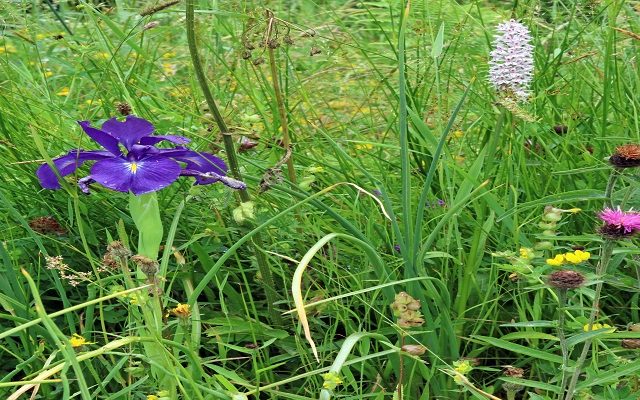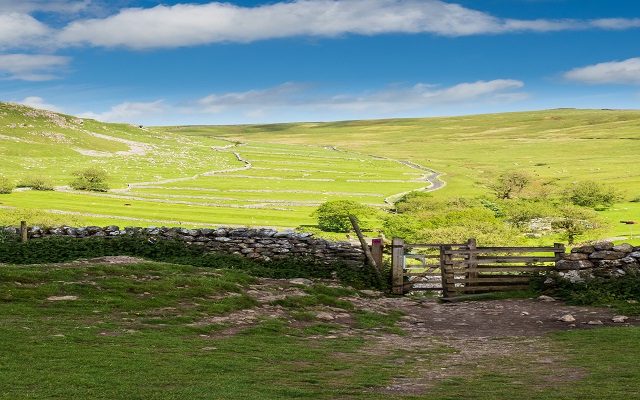Land Business Update | Week Commencing 11th December 2023
Welcome to our fortnightly update on key land management, farming, planning, forestry, environmental and energy issues.
COP28 update
Declaration signed by 134 countries on making food systems an essential part of national plans to reduce climate change
This is the first time that food production and distribution has been on the agenda and included in a significant declaration at the COP meetings. This is important as around 1/3rd of global greenhouse gas emissions come from food systems, and food production is one of the systems most affected by climate change.
The ECIU thinktank says that climate change and energy price rises have increased the UK’s food bill by £17bn since 2021, and that there has been an increase of £605 for the average household in the past year. There have also been some shortages of vegetables and fruit, due to heat waves, and the El Nina effect is expected to create more impacts on crop production.
The priorities for governments will differ globally. In poorer parts of the world, priorities are likely to be adaptation to changes in climate, which are rapid and severe. Millions of animals have died and many tens of thousands of people have already been displaced. In these areas and in the global north, focus will be on climate smart agriculture. Regenerative agriculture, accurate use of inputs, precision farming, reducing livestock emissions by better breeding and feed additives will contribute. However, adoption needs to be faster and it needs to happen alongside behaviour change, which means countries encouraging reduction in consumption of high emission products, which includes meat and dairy products.
Farming
Net profits on English farms up in 2022/23 but it’s a very mixed picture
Farm Business Income is Defra’s main measure of farm profitability. It is equivalent to net profit. In 2022/23, it rose for cereals, dairy, pigs and horticulture farms but fell for general cropping, lowland grazing, LFA grazing, poultry and mixed farms.
| Farm type | 2020/21 | 2021/22 | 2022/23 (% change from 2021/22) |
| Cereals | £71,700 | £120,100 | £150,400 (+25%) |
| General Cropping | £66,900 | £145,400 | £125,200 (-14%) |
| Dairy | £92,500 | £140,200 | £229,300 (+63%) |
| Grazing Livestock (Lowland) | £18,400 | £34,000 | £21,600 (-37%) |
| Grazing Livestock (LFA) | £33,400 | £42,900 | £25,400 (-41%) |
| Specialist Pigs | £48,000 | £11,800 | £67,900 (+477%) |
| Specialist Poultry | £77,700 | £138,100 | £105,900 (-23%) |
| Mixed | £40,200 | £74,000 | £68,000 (-8%) |
| Horticulture | £52,900 | £60,600 | £95,600 (+58%) |
| All Types | £51,900 | £86,100 | £96,100 (+12%) |
The progressive reduction to the Basic Payment meant the average payment received was 19% lower than 2021/22. It accounted for around a quarter of Farm Business Income across all farm types.
…and Farm Business Income figures show ELM payments currently going to cereal farmers
The FBI data (see above) showed that income from agri-environment schemes has doubled for cereal farmers in the past year but only increased by 4% for upland grazing farms, according to analysis by the Green Alliance. The environment charity says that there should be many more Landscape Recovery projects funded under ELM (it is currently 10-40 a year, and a tiny part of the overall ELM budget) and that the limit on the number of applicants to the Higher Tier of ELM’s Countryside Stewardship should be removed (@ 20% of applications were rejected). It says that more spending on Landscape Recovery, more capacity for Higher Tier applications and payments based on outcomes, not income foregone, would make ELM much more effective.
New funding in England
The government has (re)announced some funding for farming:
- Natural environment investment readiness fund (NEIRF) Round 3 is now open for applications – £5m in total is available and the grant is capped at £100k per project. This round aims to specifically support the farming sector, looking at landscape-scale opportunities.
- Research Starter funding opening on 18th December. A total of £850k is available for projects to improve productivity, sustainability, resilience and move to the agricultural sector to net zero. Projects with costs between £28,000 and £56,000 can apply. More information available here.
- Second round of the Improving Farming Productivity grant – up to £30m available in total. Installation of on farm solar equipment eligible for funding under this round.
- Large Research and Development fund – up to £7.8m
- Annual Health and Welfare review – Non-BPS claimants can now access the funding under this scheme.
- Extend the range of Farming Innovation Programme grants to include the Accelerating Development of Practices and Technologies (ADOPT) grant – up to £44million to test and trial new technology and techniques on farms.
Wales small grant coverings scheme Round 2 now open!
The capital grant scheme aims to support Welsh farmers to improve their on-farm infrastructure for better nutrient management. The funding can be used for instance for roofing over livestock feeding or gathering areas, rainwater goods and roofing over slurry and silage stores. The grant is capped at £12,000 and the minimum is £3,000 with the grant intervention set at a maximum 40% of capital costs. The deadline for applications is 15th December 2023. More information can be found here.
Environment
Interim review of the Farming in Protected Areas (FiPL) scheme published (England)
The review is generally positive about the scheme, which supports land managers with funding to deliver projects that improve National Landscapes (formerly Areas of Outstanding Natural Beauty), National Parks and the Broads. It found that:
- The scheme has been popular with land managers. Over 85% of respondents said they would recommend FIPL to others and 63% said that they are more likely to engage in government schemes in the future because of FiPL.
- Much of this positivity is attributed to the level of on-the-ground support from advisers, who helped encourage land managers to take part and engaged people who hadn’t taken part in other agri-environment schemes before.
- FiPL also encouraged the creation of 41 new farm clusters and facilitation groups (up to end of March 2023).
- The evaluation also noted that Local Assessment Panels are helping achieve value for money and are making decisions effectively.
How the extinction of insects would transform our planet
24% of invertebrates are at risk of extinction; it is these animals that do the most pollination. Some of the latest research shows how dependent farming is on insects; they also help improve water quality and soil health:
- The crops that provide most of our vitamins and minerals – fruits, vegetables and nuts – depend on pollinators and organisms in the soil that keep it fertile. An estimated 75% of food crops rely on pollinators to some degree and 95% of food comes directly or indirectly from the soil. If you get less pollination, production falls and the quality of that produce is going to go down as fruit becomes misshapen and less full of sugars. This is known as the ‘pollination deficit’.
- Insect pollination contributes more than £600m a year to the UK economy, according to Professor Simon Potts of Reading University, who says that biodiversity and pollination should be regarded as legitimate agricultural input.
- Analysis for three countries – Honduras, Nigeria and Nepal – found between 16% and 31% of their agricultural economic value was lost from inadequate pollination.
- Pollinators help provide clean water and sanitation because they pollinate healthy plant ecosystems which keep waterways clean. Habitats with more species are able to remove pollutants faster.
- Insects in soils help plants grow and also make soils more resilient to droughts, according to new research from Amsterdam University, which showed that microbes in soils are not as tough as previously thought during droughts, which appear to change their biology.
Natural Flood Management Accelerator Programme (Wales)
This Welsh Government programme aims to reduce flood risk in all major river catchments by identifying nature-based solutions with land managers and other parties. It will fund 23 projects across eight different Risk Management Authorities. It has £4.6m of funding over two years and is expected to fund around 23 projects.
European Parliament’s Environment Committee votes to call for a 50% reduction in the use of chemical pesticides by 2030
This interesting development could become part of the EU’s ‘sustainable use regulation’ or SUR. The proposal would require individual Member States to develop their own national targets and strategies, including for the five crops where a reduction in pesticide use would have the greatest benefit. Farmers would be able to get free independent advice on integrated pest management. The introduction of the new rules would be gradual to minimise impacts on food security. Reaction in Europe has, predictably, been polarised. Farm lobby organisations and right-wing politicians have questioned its practicality while green and left groups support it as a way to encourage faster change, to protect the environment and people’s health, and reduce GHG emissions faster.
Property and rural economy
Biodiversity Net Gain – new regulations published
The Biodiversity Net Gain Site Register Regulations 2024 has recently been published by Defra, along with some other regulation pieces. Key provisions include:
- Natural England is responsible for the establishment and administration of the Biodiversity Gain Site Register.
- Any site that offers offsite BNG units must be entered on the register. To be eligible, it must be in England, subject to a section 106 agreement or conservation covenant and registered as a local land charge.
- A BNG site must be monitored and maintained for at least 30 years once the habitat enhancement works have been undertaken.
We will publish a blog on the key parts of the regulations, so keep your eyes on our Rural Hub.
Managing bad weather risks
Storm Babet has caused widespread damage, flooding and loss of life on an estate in Scotland. While it is not possible to avoid all risks, it is possible to plan to assess and reduce them. Having a talked-through bad weather plan for a farm or estate, so staff and residents are as prepared as possible is a good starting point. In extreme circumstances, an emergency plan will help to deal with issues on the land and with properties in an organised, planned way. For example, it will include key contacts and contractors who can be called on to deal with felled trees, roof leaks and the like. Please contact Gulliver Hedley, our Health and Safety Manager, for help and guidance with managing bad weather risks and emergency planning.
Applications to install heat pumps triples due to grant increase
The number of applications for a Boiler Upgrade Scheme grant to install a heat pump increased to 2,600 / week, in the week after the government increased the grant to £7,500 for air-source heat pumps or ground-source heat pumps (and £5,000 for biomass boilers). In subsequent weeks, new applications have remained nearly 60% higher than the previous weekly average.
A Swedish energy firm will offer a monthly heat-pump payment plan to reduce the upfront costs of installing one. Aira is planning to invest £300m in the UK in the next three years to establish a series of academies across the UK to train clean-energy professionals. It plans to hire 8,000 employees in the UK over the next decade and install one million clean-energy heating systems.






